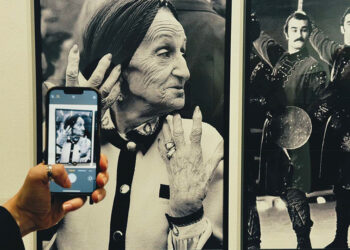On September 23, 2024, the Tbilisi International Festival of Theater brought one of the most profound explorations of art, existence, and isolation to its stage with Eimuntas Nekrošius’ rendition of A Hunger Artist by Franz Kafka. This Lithuanian production, staged by the renowned Meno Fortas theatre company, is more than an adaptation; it is a transcendent, deeply personal dialogue between Kafka’s existential crisis and Nekrošius’ own reflections on the price of artistic creation. The performance, both minimalistic and symbolically dense, encapsulates Nekrošius’ unique ability to transform literature into a living, breathing meditation on the human condition.
Kafka’s Absurd World: A Canvas for Artistic Reflection
Franz Kafka’s A Hunger Artist tells the story of a performer who starves himself in a cage as a form of art, only to find himself forgotten and obsolete in a world no longer interested in his suffering. On the surface, Kafka’s tale explores themes of existential absurdity, the futility of human endeavors, and the alienation of the artist. But in the hands of Eimuntas Nekrošius, the story takes on deeper resonances. Known for his highly symbolic, introspective approach, Nekrošius transforms Kafka’s narrative into a reflection on the artist’s eternal struggle between devotion to one’s craft and the indifference of the world.
This production, performed with stunning austerity by Viktorija Kuodyte as the titular character, becomes more than a retelling of Kafka’s bleak allegory. It is a meditation on the soul of the artist, the self-destructive compulsion to create, and the sacrifices art demands. Kuodyte’s portrayal of the hunger artist is stripped of excess, focusing on the artist’s inner turmoil rather than external drama. Her performance, alongside a minimalistic yet evocative stage design, positions the artist’s suffering as a metaphor for the invisible torment that all creators endure in the pursuit of meaning.
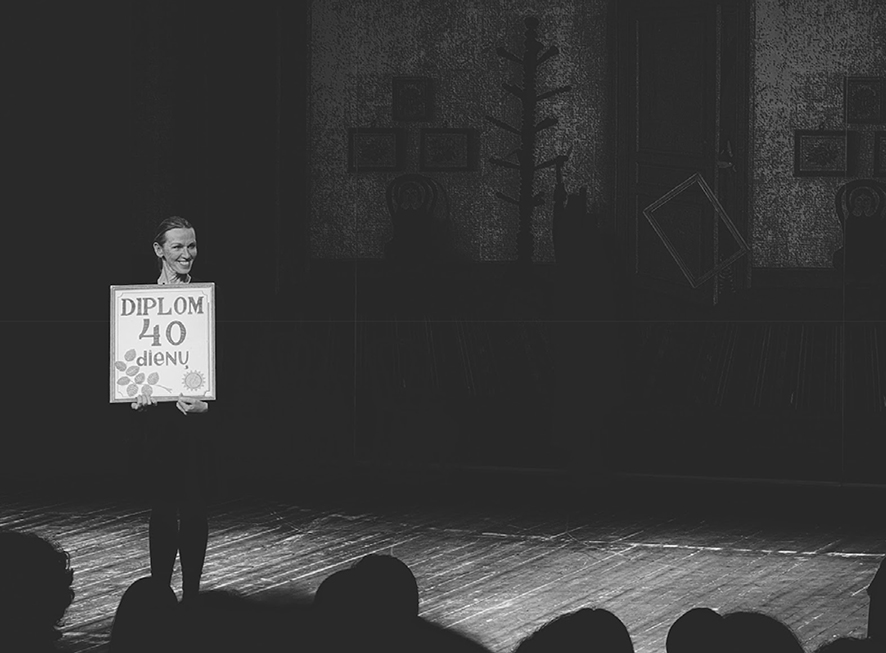
The Power of Silence: How Minimalism Elevates Existential Drama
Nekrošius’ direction is a study in restraint, with the stark, almost barren stage designed by Marius Nekrošius becoming a visual manifestation of the hunger artist’s internal void. The emptiness of the space contrasts with the emotional density of Kuodyte’s performance, underscoring the tension between what is seen and what remains unsaid. As the hunger artist, she moves with precision, every gesture laden with the weight of her existential isolation.
The performance’s minimalism also enhances its focus on Kafka’s central theme: the irrelevance of suffering in a society obsessed with spectacle. In an age of social media and constant distraction, Nekrošius’ sparse staging becomes a radical act. By denying the audience the excess they may expect, he forces them into the same uncomfortable position as the spectators in Kafka’s story—witnesses to a slow, painful decline, unable or unwilling to truly engage with the artist’s suffering. The performance, in this sense, becomes a critique of modern audiences’ superficial engagement with art and the commodification of creativity.
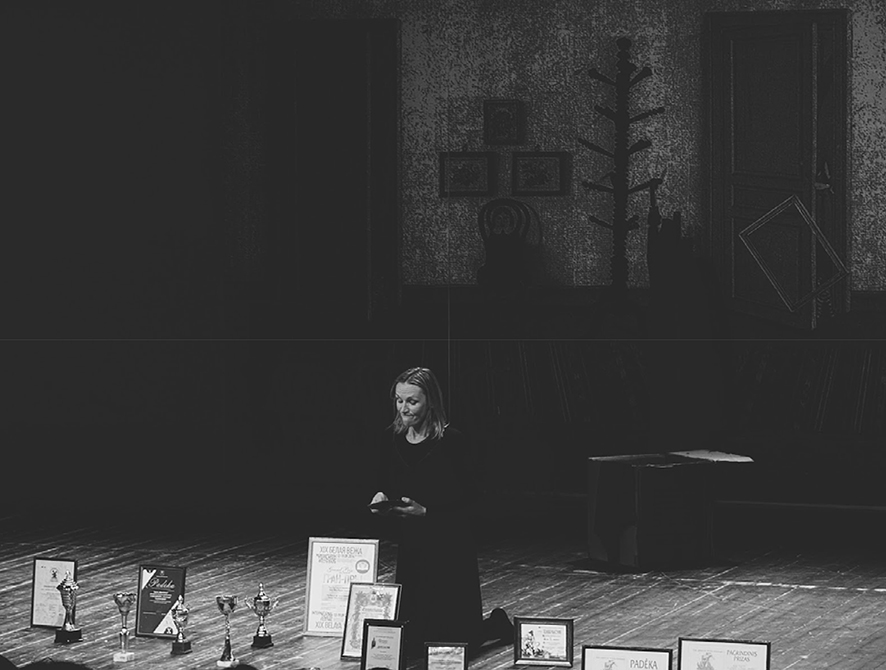
Irony and Redemption: Nekrošius’ Artistic Creed
One of the most striking aspects of Nekrošius’ approach to A Hunger Artist is his use of irony. As a director known for his philosophical depth and existential themes, Nekrošius once remarked that the best way to overcome a creative crisis is through “love of work and irony against yourself.” This ethos permeates the production. Despite the heavy themes of suffering and isolation, there is a subtle undercurrent of humor—a self-awareness that allows the audience to confront these existential questions without succumbing to despair.
Irony, in Nekrošius’ hands, is not a tool of cynicism but one of resilience. It is a way of acknowledging the futility of the artist’s efforts while also celebrating the courage it takes to continue creating in the face of indifference. This is most evident in the hunger artist’s interactions with her onstage companions, played by Vygandas Vadeiša, Vaidas Vilius, and Genadij Virkovskij, whose presence shifts between spectators, handlers, and echoes of the artist’s own psyche. Their roles, filled with subtle humor and detachment, highlight the absurdity of the hunger artist’s plight, but also the deep human need for connection, validation, and recognition.
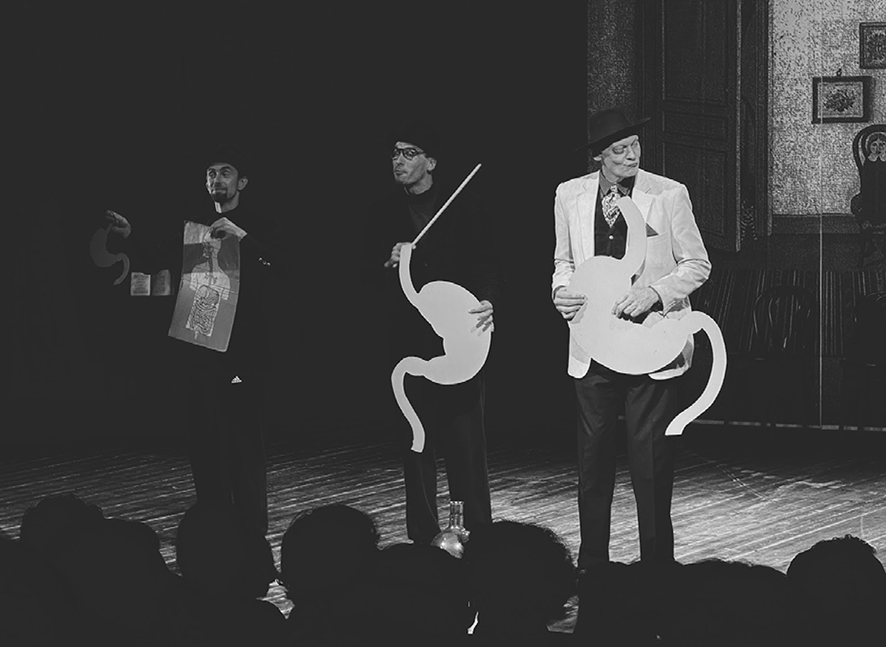
Sound and Light: Crafting Kafkaesque Atmosphere
Arvydas Dūkšta’s music, an essential component of the production, creates an ethereal soundscape that blends seamlessly with the emotional weight of the performance. The score alternates between haunting and melodic, at times acting as a counterpoint to the hunger artist’s silent suffering, and at others reinforcing the isolation of the character. Dūkšta’s minimalist approach mirrors the stripped-back design, allowing the music to serve as an emotional undercurrent that deepens the performance without overwhelming it.
The lighting, designed by Audrius Jankauskas, plays an equally crucial role in creating the Kafkaesque atmosphere. Light and shadow are manipulated to reflect the hunger artist’s inner world, oscillating between stark, clinical illumination and soft, almost otherworldly glows. These shifts in lighting evoke the fluctuating states of the artist’s mind, moving from clarity to confusion, from hope to despair. The hunger artist is at times fully visible, her suffering exposed to the audience, and at others, she is engulfed in shadow, her pain invisible, much like the inner torment that plagues so many creators. The play of light and darkness reinforces Kafka’s themes of invisibility and the ways in which society overlooks the suffering of those who refuse to conform.
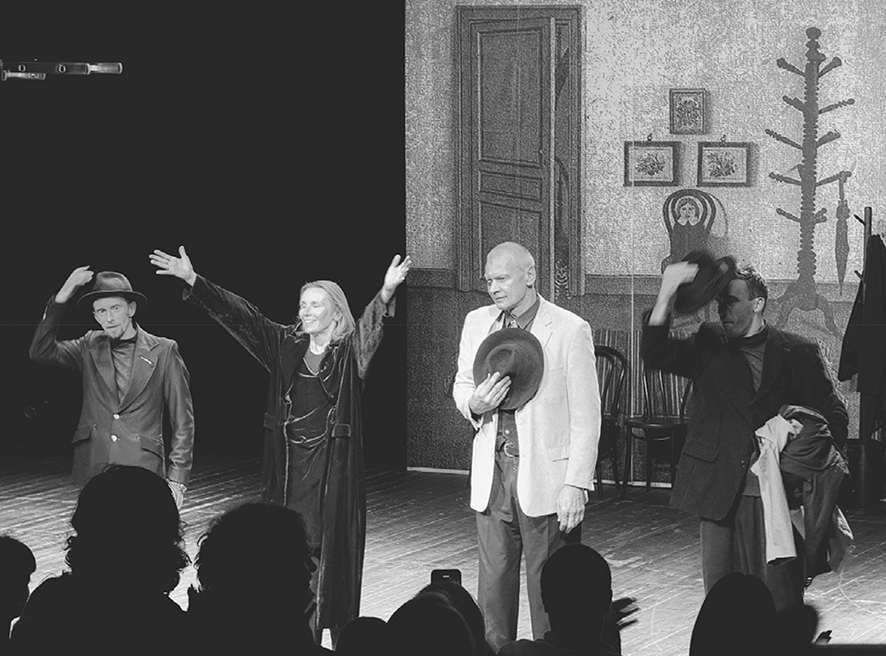
Nekrošius’ Final Testament: Art as Salvation
‘A Hunger Artist’ is one of Nekrošius’ last productions before his passing in 2019, and it is often described as one of his “purest” works. In this performance, we see not only an adaptation of Kafka’s text but a reflection of Nekrošius himself—an artist who, much like the hunger artist, was consumed by his work, creating in isolation and often wrestling with the meaning of his craft. In this sense, the performance becomes a dialogue between Kafka’s absurdism and Nekrošius’ personal philosophy of art as a form of redemption.
The hunger artist, though physically deteriorating, is spiritually resolute. Her fasting, while misunderstood and dismissed by the outside world, becomes a metaphor for the uncompromising nature of true artistic devotion. In this, Nekrošius’ direction reflects his belief that art is a sacred pursuit, one that may not always be understood or appreciated, but one that holds the power to elevate both the creator and the audience. Kuodyte’s portrayal of the hunger artist becomes an embodiment of this belief, her final moments on stage a testament to the enduring strength of the artist’s spirit, even in the face of societal neglect.
The Obsolescence of the Artist: A Timely Reflection on Creative Isolation
This production of A Hunger Artist arrives at a particularly relevant moment, as modern artists face an increasingly fragmented cultural landscape where the value of art is often measured by its commercial success or social media appeal. Nekrošius’ A Hunger Artist is a powerful reminder of the fragility of the artist’s position in society. Much like Kafka’s protagonist, contemporary artists are often left to question whether their work still holds relevance in a world that seems indifferent to the depths of creative expression.
The hunger artist’s gradual disappearance from public interest mirrors the plight of many creators who struggle to find their
place in an era of mass consumption and ephemeral trends. As cultural industries become more commodified, and art is often reduced to “content,” Nekrošius’ staging prompts the question: What happens to art—and the artist—when society loses the ability to engage deeply with creative work? The hunger artist’s isolation becomes a symbol of the profound loneliness that accompanies the pursuit of authenticity in a world driven by superficial engagement.
A Legacy of Devotion: Nekrošius’ Lasting Impact on Theatre and Art
As A Hunger Artist closes its run in Tbilisi, the echoes of Eimuntas Nekrošius’ artistic legacy remain resonant. His ability to strip down a text to its existential core while simultaneously imbuing it with rich symbolism, irony, and emotional depth has cemented him as one of the most influential theatre directors of his generation. With this production, Nekrošius leaves behind a final meditation on the sacrifices inherent to the creative process, a subject that feels especially poignant as the artist’s own career mirrored this self-sacrificial devotion to his craft.
The Tbilisi International Festival of Theatre has once again proven its role as a stage for works that push the boundaries of traditional performance. Nekrošius’ A Hunger Artist is more than a mere adaptation; it is a profound exploration of the relationship between art and suffering, audience and artist, silence and communication. It challenges us to reflect on our own engagement with art—are we spectators, passive consumers, or are we, too, complicit in the artist’s isolation?
This production, in its austerity and depth, encapsulates the spirit of both Kafka and Nekrošius: a merging of literary and theatrical genius that will linger long in the hearts and minds of those fortunate enough to witness it. Through this, A Hunger Artist becomes not just a story of an artist’s physical starvation but a meditation on the hunger for meaning, connection, and artistic transcendence that defines the creative soul.
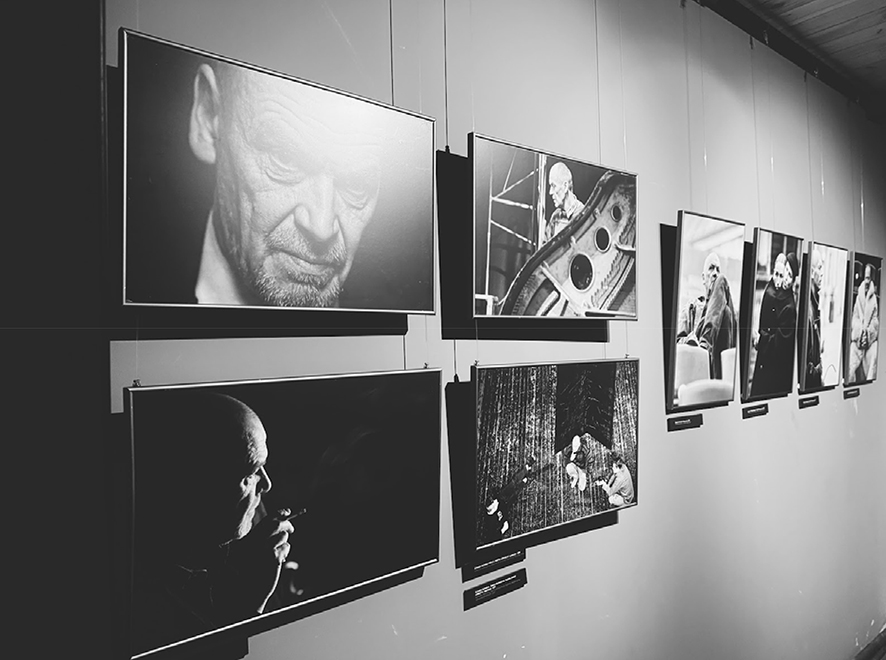
Beyond the Stage: A Traveling Tribute to a Theatrical Genius
While Eimuntas Nekrošius’ A Hunger Artist captivated the Tbilisi audience, the experience extended beyond the performance itself. In the theatre foyer, a remarkable exhibition titled ‘Theater of Nekrošius: Both Sides of the Curtain’ complemented the stage production, offering a rare glimpse into the enigmatic director’s world. Curated by Audrius Yankauskas, produced by the Meno Fortas Theatre, and brought to life through the lens of photographer Dimitri Matveev, the exhibition is an intimate journey through the performances of Nekrošius, told not through words but through meticulously crafted images.
Nekrošius, a fiercely private and introspective artist, had a complex relationship with being photographed. He famously disliked cameras and avoided them whenever possible, leaving behind only a few precious images of himself. This aversion also extended to the filming of his productions, as he believed the ephemeral nature of theatre should remain just that—something fleeting and impossible to fully capture. Yet, under these challenging conditions, photographer Dimitri Matveev spent years quietly documenting Nekrošius’ works, creating a visual archive that has become invaluable to understanding the director’s aesthetic and process. Matveev had an extraordinary ability to remain invisible, blending into the background as he captured the soul of the performances without disturbing their integrity.
First opened in 2020 at the Museum of Theatre, Music, and Film, the exhibition has traveled widely across Lithuania, appearing at venues such as the Shiluva and Dusetos Handicraft Gallery, the Panevėžys Library, Klaipėda Theatre, and the Lithuanian Parliamentary Library in 2021. With over sixty photographs in total, the exhibition in Tbilisi presents a curated selection that is carefully designed to evoke a deep emotional response in viewers—an ode to the artistic and spiritual journey Nekrošius embarked upon throughout his career.
By Ivan Nechaev



